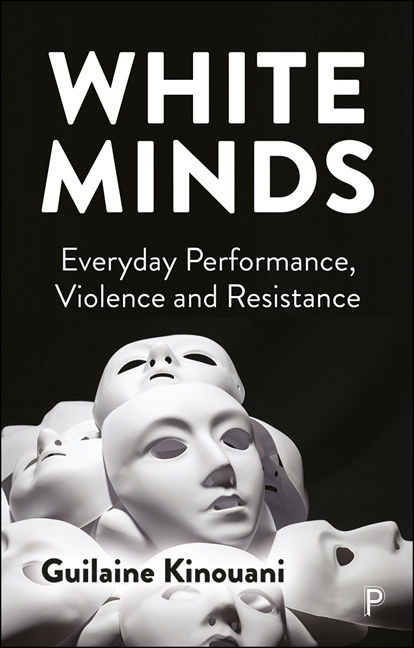Book contents
- Frontmatter
- Dedication
- Contents
- Acknowledgements
- Preface
- Note on language
- Introduction
- 1 Whiteness, time and space
- 2 White gazes
- 3 White envy
- 4 White sadism
- 5 White trauma
- 6 White dissociation
- 7 White shame
- 8 White ambivalence
- 9 White complicity
- Whiteness and resistance: by way of conclusion
- References
- Index
8 - White ambivalence
Published online by Cambridge University Press: 28 March 2024
- Frontmatter
- Dedication
- Contents
- Acknowledgements
- Preface
- Note on language
- Introduction
- 1 Whiteness, time and space
- 2 White gazes
- 3 White envy
- 4 White sadism
- 5 White trauma
- 6 White dissociation
- 7 White shame
- 8 White ambivalence
- 9 White complicity
- Whiteness and resistance: by way of conclusion
- References
- Index
Summary
‘I am a 57-year-old white cis male group analytic psychotherapist who thinks he is rocking it as an “Ally” [and who] finds himself standing by the wheelie bin one evening with a “Jolly Sambo” money box in his hand and is frozen; torn between the decision to throw away this relic of a racialised, white supremacist Empirepermeated childhood in 1960s working-class Lancashire and the treasured memories of playing with the same object at his Nana’s feet in front of the coal fire loading it with old pennies over and over again and laughing as it rolled its eyes and lifted its arm to feed itself more pennies. “How could I throw that experience of my Nana’s love in the fucking bin?”’ (John, white man, 50s, England)
Anyone racialised as white seeking to commit to anti-racism will at some point need to confront their relationship with whiteness, including their internalisation of white supremacy. Although we may often take this step for granted, the problematics and challenges of facing the reality of white supremacy and one’s complicity require some exploration. We know that human beings will go to extraordinary lengths to maintain their psychic equilibrium. We examined earlier in the book some of the physiological, psychic and social processes that help the white body flee the reality of white supremacy. When, a decade or two ago, I first encountered Black skin, white masks by Fanon, I had such a strong visceral response to it; I did not finish it [1]. I experienced an intense dislike for the words I was reading. I have not experienced this with any other book. I remember discarding the book, and did not touch it again for years. Such reactions always call for our attention. The reality is I was not ready. My mind refused to engage with the contents. My body put out a block. Perhaps this was to protect me from seeing part of myself or the world I was not prepared to see. Yet, Black skin, white masks is now one of my most cited texts. It took several painful encounters with whiteness for me to go back to Fanon’s words. My experience of the world drove my needing to understand this text.
- Type
- Chapter
- Information
- White MindsEveryday Performance, Violence and Resistance, pp. 128 - 148Publisher: Bristol University PressPrint publication year: 2023

